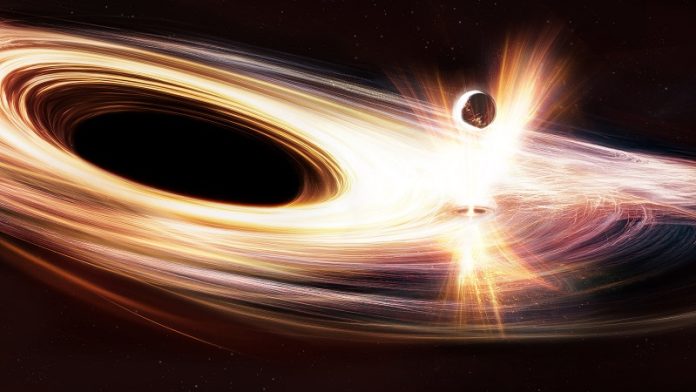
Black holes are some of the most mysterious objects in the universe.
These invisible giants can lie quietly for years, even centuries, without showing any signs of activity.
But every now and then, one wakes up—and when that happens, it puts on a dramatic show.
That’s exactly what happened in a galaxy called SDSS1335+0728, located about 300 million light-years away in the constellation Virgo. For decades, this galaxy seemed quiet and unremarkable.
But in late 2019, astronomers noticed that it suddenly started glowing much brighter than usual.
After years of studying this strange behavior, scientists now believe the supermassive black hole at the center of the galaxy has become active. They’ve named the galaxy’s glowing center “Ansky.”
Black holes are known for their powerful gravity, which can pull in nearby gas, dust, and even stars. When this material gets too close, it heats up and forms a glowing disk around the black hole, called an accretion disk. But sometimes, black holes go through long periods where they aren’t feeding on anything—and that’s when they appear quiet.
In Ansky’s case, everything changed. A team of astronomers led by Paula Sánchez Sáez first noticed the galaxy lighting up in optical images. But when they checked X-ray data from space telescopes, they didn’t see anything unusual—yet.
Then, in February 2024, a second team, led by Lorena Hernández-García, detected something exciting: bursts of X-rays coming from Ansky. These flashes weren’t random—they appeared at nearly regular intervals. The phenomenon is called a quasiperiodic eruption, or QPE. These are short, bright flashes of X-ray light that repeat over time. QPEs are extremely rare, and Ansky’s case is especially strange—it seems to be the first time a QPE has been observed in a black hole that’s just becoming active.
Using powerful space telescopes like XMM-Newton, NASA’s NICER, Chandra, and Swift, astronomers were able to study these flares in detail. They discovered that Ansky’s X-ray bursts are different from all previously known QPEs—they are 10 times longer, 10 times brighter, and release 100 times more energy than others. The time between flares is also the longest ever observed, happening every 4.5 days.
These unusual characteristics challenge existing ideas about what causes QPEs. Usually, scientists think they’re caused when a small object, like a star or another black hole, gets caught by a bigger black hole and interacts with its accretion disk. This may create bright flashes as material is pulled in. But with Ansky, there’s no sign that a star was destroyed.
One possible explanation is that the black hole is pulling in gas from its surroundings, not from a star. The X-ray flashes could be caused by a small object—like a planet or compact star—disturbing the gas in the disk over and over again.
Researchers are excited by the chance to watch this black hole come to life in real time. As X-ray telescopes continue to observe Ansky, future missions like ESA’s LISA (Laser Interferometer Space Antenna) may also detect gravitational waves from the same event. This combined data could finally help scientists understand how QPEs work—and offer new clues about the behavior of black holes.
For now, Ansky remains a powerful reminder that the universe still holds many surprises—and sometimes, even a quiet galaxy can suddenly steal the spotlight.
Source: ESA.



